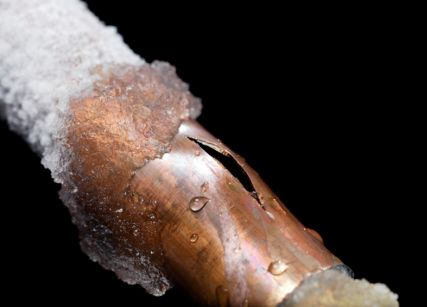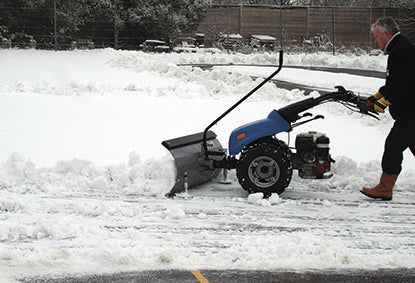With the drop in temperature recently it certainly feels as if winter has arrived (although not officially until 21 December apparently) so now is the time to take action to ensure that your home is suitably protected.
Again, the internet has proved to be an invaluable resource and thanks to all the wonderful websites offering guidance we have compiled a list of things to do to keep your home and property safe and protected during the winter months.
Prepare your home now. Get heating and cooking appliances checked, flues and chimneys swept ensuring ventilation points are not blocked. If you use heating oil, LPG or wood products as the main heating source, make sure that you have a sufficient supply to avoid running out. Fit an audible carbon monoxide alarm which is EN50291 compliant and make sure that your smoke alarms are all working. However, fitting an alarm should not replace regular maintenance of appliances.
Keep the heat in. Insulating your home not only keeps you warm and healthy but will also help to keep your costs down. The Met Office recommends the following:
- Fit draught proofing to seal any gaps around windows and doors.
- Make sure that your loft has at least 10-11” (270mm) of insulation. Any home with 4” (100mm) or less should have it topped up.
- If you have wall cavities, make sure that they are insulated too.
- Insulate your hot water cylinder and pipes.
- Draw your curtains at dusk to help keep the heat generated inside your rooms.
- Make sure that your radiators are not obstructed by curtains or furniture.
Prevent frozen pipes. During spells of severely cold weather water pipes in your home can freeze which may lead to a burst pipe when the thaw sets in. This is not only inconvenient but can lead to damage to your home and possessions.
Following the points below may help to prevent frozen pipes:
- Leave the central heating on for short periods of time throughout the day and night.
- If your water tank or pipes are in your loft then leave the hatch open to let warm air into the space.
- Keep the cupboard door under the sink open to let warm air move around the pipes.
- Keep room doors slightly open to allow the warm air to move around the house.
- Know where your stopcock is – it is normally located under the sink, or near where the water supply enters the house.
- Make sure you know where the isolating valves for the hot and cold supply are and check that you can turn them easily.
- If you are going away then leave the heating on, the doors open, the loft hatch open and if possible ask a friend or neighbour to check the house.
- Don’t forget to protect/insulate outside taps if you have them.
If you have a frozen pipe thaw it out slowly using hot water bottles or towels soaked in warm water or a hairdryer. Start by warming the pipe as close as possible to the tap or valve, then work along it. NEVER use fierce heat such as blowtorches or naked flames as this may cause the pipe to burst and could also lead to a fire in the home.
 If you have a burst pipe or water leak in the home then turn off the stopcock immediately to stop any more water getting into the water pipes – the rush of water should stop after a short while. If the rush of water does not stop or there is still a constant run of water then the problem is most likely on the cold water storage system in which case you will need to drain down the cold water storage tank (usually located in the loft). If in doubt, always contact a professional for advice.
If you have a burst pipe or water leak in the home then turn off the stopcock immediately to stop any more water getting into the water pipes – the rush of water should stop after a short while. If the rush of water does not stop or there is still a constant run of water then the problem is most likely on the cold water storage system in which case you will need to drain down the cold water storage tank (usually located in the loft). If in doubt, always contact a professional for advice.
Clear your gutters. It is vital to clear your gutters at this time of year as most parts of the UK experience very high rainfall during winter and the possibility of snow which then thaws. In addition, the weight of debris that can build up in your guttering can cause it to crack or break and fall.
Using a ladder, climb up and give the gutters a thorough examination. Once you have identified problem areas you can then clear any build-up using a scraper or a trowel.
Only do this yourself if it’s safe, if you can't reach your gutters easily then hire a professional who will have all the equipment necessary for the job.
Should you decide to go the DIY route then take note that the most difficult challenge is if a blockade occurs within the downpipe where you can't see. A handy tip to prevent this from happening is to place a rolled up ball of chicken wire, or a wire balloon, at the point where the gutter meets the downpipe, allowing water to flow freely but stopping debris.
However, bear in mind that this will need to be checked more frequently to clear the debris that is caught. If your downpipe is already blocked then you will need drainage rods to push through the blockage from above which can be bought from most DIY stores.

Be prepared for snow and ice. Snowy winters seem to be a regular occurrence now so stock up on de-icer, salt, and snow clearing equipment. If you are clearing snow and ice from your property, always take care and wear the appropriate clothing and if necessary PPE.
- Try to clear snow as early in the day as possible. It's much easier to remove fresh loose snow than snow that has compacted because people have been walking on it all day. In addition, there is always a chance that the sun will make an appearance and if the snow is cleared to a thin layer then the sun should melt the remainder.
- It's easiest to clear a path through the middle first, then walk along the cleared path moving the snow from the centre off to the sides.
- Always be aware of where you are clearing the snow to. Don't just push it onto someone else's property, and be careful not to cover drainage areas.
- NEVER use hot water to melt ice or snow, it may refreeze and turn to black ice which is extremely dangerous.
- Spreading salt on the cleared area will help prevent ice forming. Salt is the best thing to use, table salt or dishwasher salt will also be OK. If no salt is available then sand or ash are both good alternatives.
- When distributing salt try to avoid spreading it on plants and grass as they may be damaged.
- If you are spreading salt or sand by hand, then throw the granules low along the ground as they'll be distributed more evenly.
- Be extra careful when clearing snow from slopes or steps.
- Make sure that you are suitably dressed. Layers are best as you will quickly warm up as you work and can easily remove layers as necessary. Always wear footwear that provides good grip.
- Be aware of your limits! It's hard work if you're clearing snow by hand so be careful not to overdo it.
- Check on elderly or vulnerable neighbours if possible. They may have pathways that need to be cleared too.
- Don't be afraid to help other or clear areas outside your property. According to gov.uk: "You can clear snow and ice from pavements yourself. It's unlikely that you'll be sued or held responsible if someone is injured on a path or pavement if you've cleared it carefully". Just ensure you don't make the surface more dangerous than before and remember that people using the area also have a responsibility to be careful themselves.








